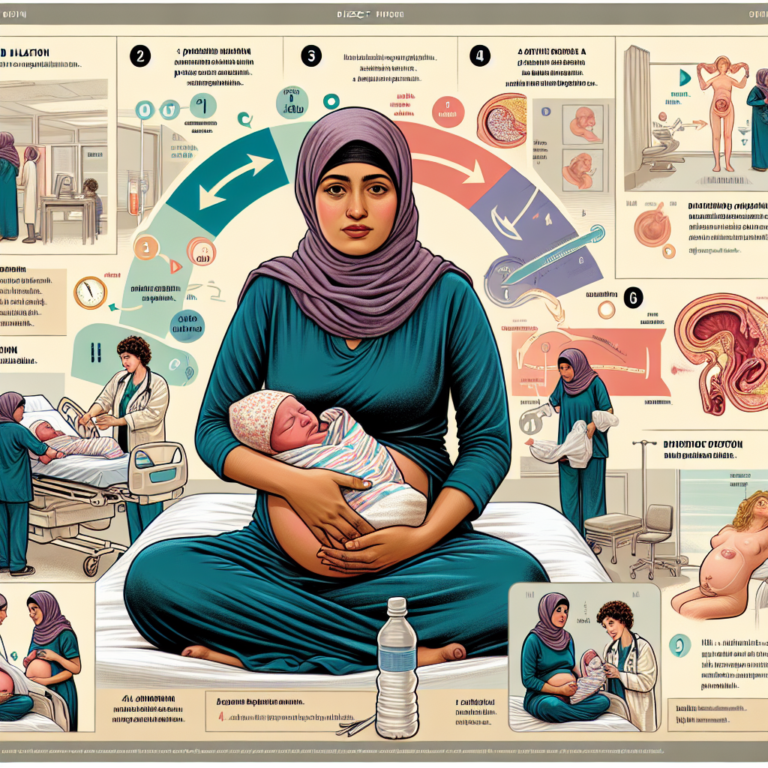Childbirth is a profound and transformative experience that marks the beginning of a new chapter for families. It involves a complex interplay of physiological processes and emotional dynamics, making it both a miraculous and challenging event. Whether you’re an expectant parent or a curious reader, understanding the intricacies of childbirth can provide valuable insights and preparation for this life-changing journey. In this article, we delve into the fascinating world of childbirth, offering a comprehensive guide to its stages and expert tips for a smooth delivery. From the initial labor pains to the moment of welcoming a new life, our detailed exploration aims to equip you with the knowledge and confidence to navigate each phase with grace and preparedness. Join us as we unravel the mysteries of childbirth, providing you with essential information and strategies to make informed decisions and embrace the experience with open arms.
1. “Understanding the Stages of Childbirth: A Comprehensive Guide”
Childbirth is a transformative experience that unfolds in distinct stages, each playing a crucial role in bringing new life into the world. Understanding these stages can help expectant parents prepare for the process and alleviate some of the anxieties associated with childbirth.
The first stage of childbirth is known as labor, which is further divided into early labor, active labor, and the transition phase. Early labor is the longest yet least intense part of the process. During this stage, the cervix begins to dilate and efface, allowing the baby to move into position for delivery. Contractions are typically mild and irregular, gradually increasing in intensity and frequency. Active labor follows, marked by more pronounced contractions as the cervix dilates from about 6 to 10 centimeters. This phase can last several hours, and it’s often when a birthing person will go to the hospital or birthing center. The transition phase is the most intense part of labor, where contractions are strong and close together, preparing the body for the next stage.
The second stage of childbirth is delivery, where the baby is born. This stage begins once the cervix is fully dilated and the birthing person feels the urge to push. With each contraction, the baby moves further down the birth canal. This stage can last anywhere from a few minutes to a few hours, depending on various factors such as the baby’s position and the birthing person’s experience. Support from healthcare professionals and birthing partners is essential during this stage to ensure a safe and smooth delivery.
The third and final stage of childbirth is the delivery of the placenta, also known as the afterbirth. This stage typically occurs within a few minutes to half an hour after the baby is born. The placenta, which has provided nourishment and oxygen to the baby throughout pregnancy, detaches from the uterine wall and is expelled through the birth canal. This stage is usually brief and less intense than the previous stages, but it is crucial for the birthing person’s recovery and the prevention of postpartum complications.
By understanding the stages of childbirth, expectant parents can better prepare themselves mentally and physically for what lies ahead. Each stage is unique and demands different levels of energy and support, but with the right knowledge and preparation, childbirth can be a more manageable and empowering experience.
2. “Childbirth Preparation: Tips and Techniques for a Smooth Delivery”
Preparing for childbirth is a crucial step in ensuring a smooth delivery and a positive birthing experience. There are several tips and techniques that can help expectant parents feel more confident and ready for the arrival of their baby.
 Also Read:
Navigating Childbirth: Essential Insights and Tips for Ex...
Also Read:
Navigating Childbirth: Essential Insights and Tips for Ex...
Firstly, attending childbirth education classes can be immensely beneficial. These classes provide essential information about the stages of labor, pain management options, and what to expect during delivery. They also offer a platform to ask questions and address any concerns, which can alleviate anxiety.
Practicing relaxation techniques is another key aspect of childbirth preparation. Techniques such as deep breathing, visualization, and meditation can help manage stress and reduce discomfort during labor. Many parents also find value in learning about different birthing positions, as these can facilitate a smoother childbirth process by working with the body’s natural instincts.
Incorporating regular exercise into your routine can also prepare your body for childbirth. Activities like prenatal yoga, swimming, or walking can improve stamina, flexibility, and muscle tone, all of which are beneficial during labor. It’s important to consult with a healthcare provider to determine which exercises are safe and appropriate.
Creating a birth plan is another effective strategy for preparing for childbirth. This plan outlines your preferences for labor and delivery, including pain relief options, who will be present, and any specific cultural or personal practices you wish to observe. While it’s important to remain flexible, having a plan can provide a sense of control and direction.
Finally, establishing a strong support system is crucial. Whether it’s a partner, family member, friend, or doula, having someone there for emotional and physical support can make a significant difference in the childbirth experience.
By taking these steps to prepare for childbirth, parents can approach delivery with greater confidence and peace of mind, setting the stage for a smoother, more positive experience.
